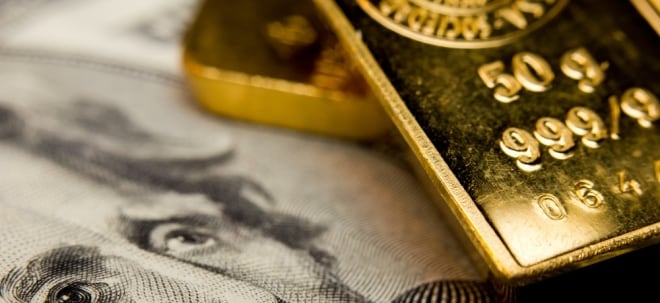Dark side of the housing boom: Shoddy construction
Wednesday February 14, 9:12 am ET
By Sarah Max, Money Magazine contributing writer
Less than a year after moving into her new 2,100-square-foot house in Lenexa, Kans., Susan Sabin has strung up lemon lights in her front window.
The lemons, she says, go perfectly with the home's most prominent features: jammed doors, warped windows, bent pipes and cracked walls. "The house is essentially splitting in two," says Sabin.
ADVERTISEMENT
At the peak of the recent housing boom, home buyers scooped up a million newly built homes every year while homeowners poured more than $200 billion into renovations. But now stories of shifting soil, leaky roofs, damaged stucco and other construction defects abound.
Though many builders have worked to improve the quality of their houses over the past decade, says Alan Mooney, president of Criterium Engineers, a national engineering firm, the building frenzy also opened the door for unskilled labor, unscrupulous contractors and untested products.
"When everyone is out there building as fast as they can, that does result in more defects," he says.
Contractor problems rank among the most common consumer complaints, according to the Better Business Bureau, and a recent Criterium Engineers study found that 17 percent of new residential construction projects inspected by the firm in 2006 had at least two significant problems.
If you've been gnashing your teeth over defects in your new or recently renovated home (and complaining to the builder hasn't solved them), it's probably cold comfort that you're not alone.
What do you do? A lawsuit is bound to be expensive and messy, if you can even get in front of a jury at all; many builder's contracts nowadays include a binding-arbitration clause that essentially waives your right to a jury trial.
Of course, your best bet is to catch the problem early, before you've paid for the work. But even after the job is long done, you still have a powerful tool on your side: the builder's need to protect his reputation.
Here's how to evaluate the likelihood that you'll be able to get your home repaired at minimal cost, and your plan of action.
Check your warranty
Your builder or remodeler likely gave you what's called an "express" warranty, which typically covers everything from cosmetic flaws to serious defects for a year (most common) to 10 years (pretty rare).
If the warranty names the defect you're complaining about, gather your documentation and ask your contractor to repair the damage at no additional charge. If your warranty has expired, you aren't necessarily out of luck.
Depending on the state you live in and the nature of the defect, your house may still be covered by a so-called implied warranty of habitability for another seven to 10 years. But it will be up to you to prove that the defects are so severe that they are a health or safety hazard.
Learn how to spot a real defect
Your next step is to figure out whether your problem is a bona fide defect under the terms of the warranty (or in the eyes of an arbitrator) or what home builders define as an acceptable imperfection.
"There is no such thing as a perfect house," says Mooney. "A lot of what people consider defects are really not defects."
According to the National Association of Home Builders' performance guidelines, small cracks in the interior concrete slab are normal; only those exceeding 3/16 of an inch should be repaired. Hammer marks or nail pops visible within six feet are acceptable, but marks you can see farther away are not.
You may not agree with these definitions, but it's tough to fight them. (You can order a copy of the NAHB's "Residential Construction Performance Guidelines" for $39.95 at BuilderBooks.com.)
Gather the evidence
Document problems with photos and detailed notes. Record everything from conversations with your builder or contractor to the exact time - and the weather conditions - on the day, say, your basement flooded.
"Make the assumption that this will end up in a significant dispute," says Mooney.
To bolster your case, you may need to pay for expert advice. An independent inspector or structural engineer will charge about $250 to $500 to give your house a full examination, along with a detailed report of the problems at the heart of your dispute.
After Ann and David Richardson's contractor put a two-story addition on their Kansas City house last year, it failed city inspections twice. The couple then hired an engineer who found that, among other problems, inadequate roof support was putting pressure on the walls and forcing them to bow.
"He said the walls were life-threateningly out of plumb," says David. Faced with this assessment, the contractor agreed to do the repair (though he later declared bankruptcy before he finished).
Find greater strength in numbers
If your housing development was constructed by a single builder, see if your neighbors are having similar complaints. "You'll often find that their houses are having the same problems as you," says Nancy Seats, president of Homeowners Against Deficient Dwellings, a group that helps homeowners fight back against construction defects.
After Pam and Jeff Cobbs noticed that the windows on their new home in Bend, Ore. leaked during rain storms, they teamed up with other neighbors who were having similar problems.
As it turned out, the windows and siding on more than 20 houses on the block had been installed improperly, causing water damage and, in some cases, mold.
Just a few months after the group complained, the builder sent in crews to remove all of the siding and trim, reinstall the windows, wrap the houses, put on brand new siding and repaint everything.
Know your state rules
If you aren't bound by a binding-arbitration agreement and you think you might have a case for a lawsuit, be aware that in recent years, 30 states have adopted "notice and opportunity to repair" laws, which require homeowners to give builders a chance to assess and remedy the problem before they go to court.
Typically, you have to submit a written complaint to the builder or contractor, who then has a certain amount of time to inspect the property and make repairs - usually up to 90 days.
Unfortunately, these laws, designed to protect builders, says Janet Ahmad, president of Home Owners for Better Building, don't obligate the builder to fix your problem (after an inspection, they may tell you that the fault is unrelated to their construction).
But your builder may patch up your home to avoid a lawsuit. If not, you are probably free to sue. To find out about your local "fix it" laws, start by calling your state attorney general's office.
If all else fails, get creative
When the first cracks began appearing in Susan Sabin's home shortly after she moved in last June, she contacted Pulte Homes, which sent in engineers and contractors to repair minor problems. But Sabin still believes they're ignoring major defects.
"They keep fixing the symptoms," she says. "I want them to fix the source of the problem."
So Sabin has strung up lemons and opened her house to anyone who wants to see the cracks. Soon after, her story made the local news.
Pulte, which says the problems with the home are a result of soil expansion underneath, has so far not agreed to rebuild Sabin's home from scratch. But it certainly is not ignoring her complaints.
"Structurally her home is as sound as any other home we've built in the city," says Todd Lipschutz, Pulte's division president in Kansas City. "We will make the necessary repairs."
|


 Thread abonnieren
Thread abonnieren

